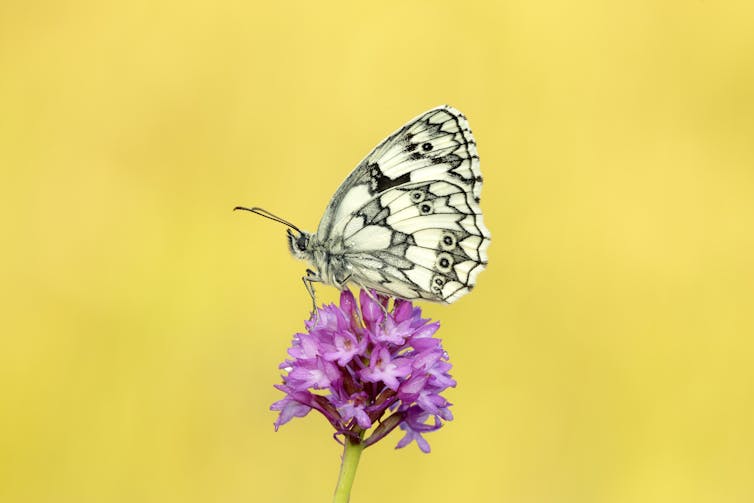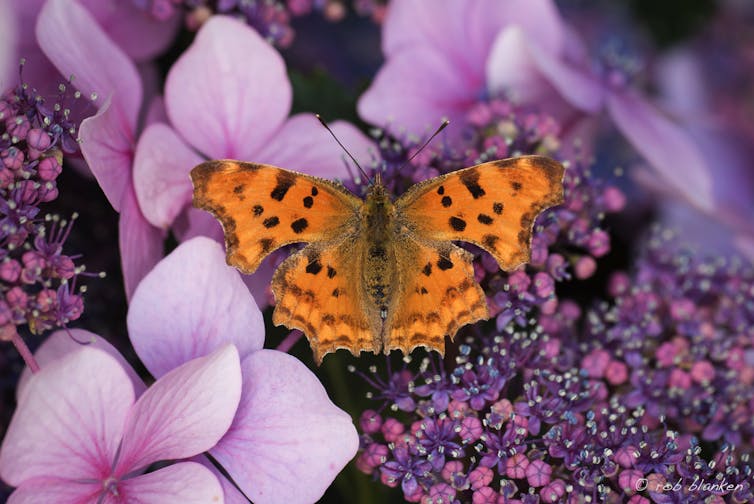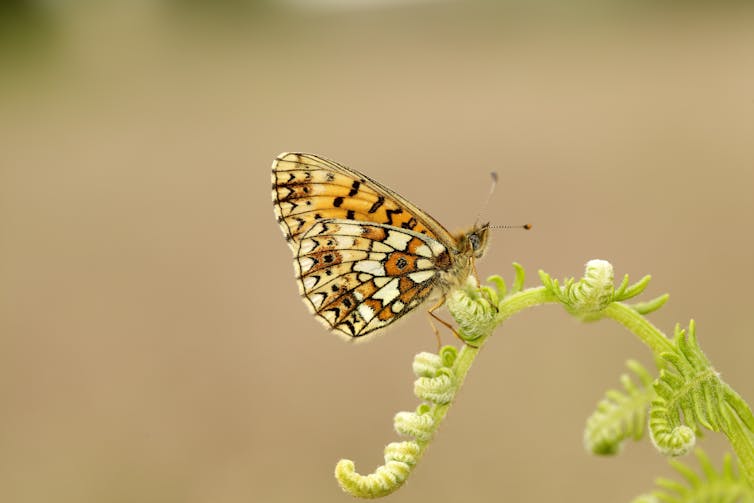
Iain H Leach/Butterfly Conservation, CC BY-ND
Marcus Rhodes, University of Exeter
Butterflies are important bellwethers of environmental change. Highly sensitive to climatic conditions and undergoing large fluctuations in abundance from year to year due to vagaries of weather, they offer a unique window into the ecology of our rapidly changing world.
Newly published results from the UK Butterfly Monitoring Scheme present a mixed picture for butterflies in 2023, with notable contrasts between certain winners and losers.
This initiative is led by the charity Butterfly Conservation, the UK Centre for Ecology & Hydrology, the British Trust for Ornithology and the Joint Nature Conservation Committee. Since 1976, the scheme has compiled trends for 58 butterfly species from a network of monitored sites across the UK. In 2023, half of butterfly species had a better than average year, while the other half saw numbers below average.
Species that did well last year included brown argus, comma, holly blue, marbled white and black hairstreak, all of which recorded their top three best years since the scheme began. Many of these butterflies are currently undergoing range expansions in the UK.
This means that they are spreading across a wider geographical area as the climate becomes increasingly favourable for them. In the 1970s, for example, the comma was restricted to the southern half of Great Britain, but has rapidly pushed north and westwards in recent decades, colonising northern England, southern Scotland and south-east Ireland.

Rob Blanken/Butterfly Conservation, CC BY-ND
Arguably, the star species of 2023 was the red admiral, which recorded its best ever year in terms of abundance. This migratory species arrives in the UK in variable numbers from southern Europe and north Africa each summer, with 2023 being an exceptionally good migration year for this butterfly.
Since the monitoring scheme began almost 50 years ago, the abundance of this species in the UK has more than tripled. It is also increasingly overwintering here, instead of migrating back south, as our winters become milder.
Brimstone, chequered skipper and large blue butterflies recorded their best ever years in 2023. These results are particularly encouraging for the large blue, which was reintroduced to the UK following its extinction in 1979. Last year’s success pays testament to the dedicated conservation work that has enabled its return.
From best to worst
Other species did not fare so well. Small tortoiseshell and small pearl-bordered fritillary both suffered their worst year on record in 2023, undergoing declines of 82% and 71%, respectively, since 1976. While the causes of these declines are not fully understood, climate change has been implicated in the fate of both species.

Iain H Leach/Butterfly Conservation, CC BY-ND
The decline of the small pearl-bordered fritillary is mainly due to changes in woodland management, but there are also indications that this species suffers reduced abundance following high summer and winter temperatures. Record-breaking high temperatures during summer 2022, at the time when small pearl-bordered fritillaries would have been caterpillars, may have impacted the butterfly’s numbers in 2023.
Small tortoiseshell may be suffering from the climate-enabled arrival in Britain of the parasitic fly, Sturmia bella, which kills its caterpillars. The species appears to be faring better in cooler, wetter western and northern regions, having its second-best year on record in Northern Ireland, but its worst ever year in England, second worst year in Wales, and joint fifth worst year in Scotland.
Do the seasons feel increasingly weird to you? You’re not alone. Climate change is distorting nature’s calendar, causing plants to flower early and animals to emerge at the wrong time.
This article is part of a series, Wild Seasons, on how the seasons are changing – and what they may eventually look like.
The drought in 2022 may also have hit butterfly populations in 2023, although not so severely as initially feared. Caterpillars are particularly vulnerable to the effects of drought, because if their food plants wither, the caterpillars can starve. Ringlet and green-veined white butterflies, two species particularly affected by drought, both experienced a poor year in 2023, which may have been a legacy of the previous dry summer.
Another loser in 2023 was the Scotch argus, a northern, cold-adapted species, that is retreating to higher latitudes as the climate warms. Other species performing poorly, including the cryptic wood white, grizzled skipper and grayling, are all habitat specialists that rely on semi-natural habitats, such as heathland, species-rich grassland and traditionally managed woodland.
Their populations are in long-term decline due to habitat loss and reducing habitat quality as a result of changing land use, such as a move towards more intensive farming.
For butterflies to thrive in our increasingly altered climate, their habitats need to be restored and expanded to bolster populations and build resilience. Managing habitats to promote a variety of microclimates, by creating a mosaic of different vegetation types for example, may also help to buffer populations. A wider range of microclimates within the local environment can provide opportunities to seek refuge from adverse conditions, now and into the future.![]()
Marcus Rhodes, Postdoctoral Research Associate, Ecology and Conservation, University of Exeter
This article is republished from The Conversation under a Creative Commons license. Read the original article.







